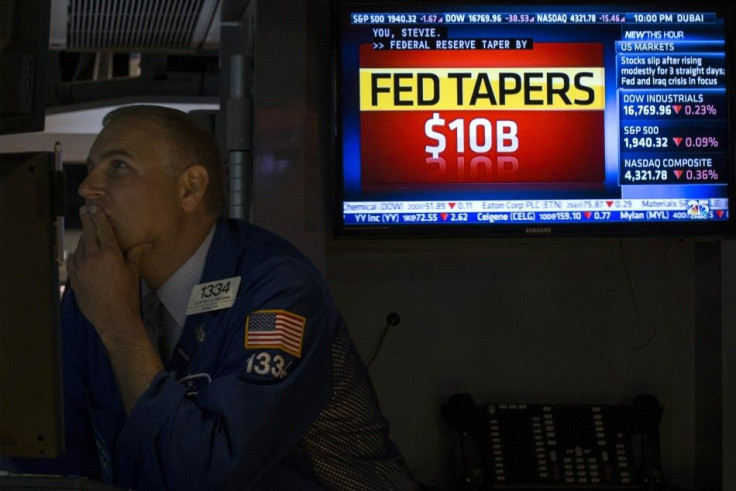Global Markets Overview – August 4, 2014

Jobs slack and oil flares
There is an interesting divide emerging in the major macros affecting global markets.
To recap, the points below are likely to be factors over the coming four months to December:
- The Fed's view being proven correct. Over the weekend, the non-farm payrolls showed over 200,000 jobs were created, however part-time employment is leading the way and wage inflation is stagnant at best. Average hourly earnings month-on-month fell to 0%, and unemployment rose with participation still sitting near 1977 levels.
- 'Lower for longer': US bond yields for the first time in months saw a steeping of the yield curve, as two-year bonds rose sending yields lower on expectations that the Fed will hold out till mid-2015 to move on rates.
- The big end to taper: it is still very unclear how the market will react to the end of the asset purchase program, as the auto-pilot setting remains firmly in place for an October conclusion.
- Eurasia: President Putin remains determined to pull Ukraine into his political sphere. However, with Europe expected to move sanctions to even stronger levels, which will be matched one-for-one by the US, any easing in his political stance is likely to be tactical, meaning the issues at the border will simmer in the back ground.
- The Persian empire: Brent remains above US$105 and has for over three years, as tensions within Iran flare, we are seeing sectarian violence in Syria and Iraq, plus two major regime changes in Egypt (Libya should be included here) have created constant issues on the supply side. Currently two of these players should be watched: supply side interruptions in Iraq from the rise of ISIS, and more importantly Iran's negotiations regarding its nuclear program. If a deal is struck this would be a positive for oil prices and could see it below US$100.
- Argentina's "default": This is a side issue for the markets, as Argentina is a frontier market and does not affect global fund follows. However, the default is considered a trigger of credit default swaps; what will be interesting considering the global spread of these papers is whoever will end up holding the black swan will make for some interesting reading and may see a few haircuts.
I am not calling the market into a correction here as the most important of these points is the Fed, considering it is behind everything, and I site the gold and the bond markets here which have only reacted to macro events affecting the Fed (e.g. Thursday saw Argentina hit the headlines, yet gold went down not up as interest rate expectations rose). However, it is worth keeping an eye on these macros as all will play a role in how the market finishes the year. What I am long at the moment is volatility; four weeks ago it hit 10.2 pre-GFC levels, and the point above shows that 10.2 is too low and put protection will have to increase as investors hedge against risk as volatility rises.
Ahead of the Australian open
Start of the month is Australian data deluge week; we have trade balance, the employment change and unemployment rate, August's RBA rate decision and statement, plus we also see the quarterly monetary policy statement from the RBA on Friday. It is a major week for the AUD.
Based on the close of the futures on Saturday we are calling the ASX 200 down 0.5% to 5529.
Asian markets opening call | Price at 8:00am AEDT | Change from the Offical market close | Percentage Change |
Australia 200 cash (ASX 200) | 5,528.90 | -28 | -0.49% |
Japan 225 (Nikkei) | 15,455.00 | -68 | -0.44% |
Hong Kong HS 50 cash (Hang Seng) | 24,563.00 | -29 | -0.12% |
China H-shares cash | 11,009.00 | -10 | -0.09% |
Singapore Blue Chip cash (MSCI Singapore) | 383.10 | 1 | 0.31% |
US and Europe Market Calls | Price at 8:00am AEDT | Change Since Australian Market Close | Percentage Change |
WALL STREET (cash) (Dow) | 16,510.50 | -88 | -0.53% |
US 500 (cash) (S&P) | 1,927.51 | -7 | -0.34% |
UK FTSE (cash) | 6,683.10 | -35 | -0.53% |
German DAX (cash) | 9,204.90 | -191 | -2.03% |
Futures Markets | Price at 8:00am AEDT | Change Since Australian Market Close | Percentage Change |
Dow Jones Futures (September) | 16,444.50 | -88.00 | -0.53% |
S&P Futures (September) | 1,922.13 | -6.50 | -0.34% |
ASX SPI Futures (September) | 5,479.00 | -19.50 | -0.35% |
NKY 225 Futures (September) | 15,470.00 | -117.50 | -0.75% |
Key inputs for the upcoming Australian trading session (Change are from 16:00 AEDT) | Price at 8:00am AEDT | Change Since Australian Market Close | Percentage Change |
AUD/USD | $0.9307 | 0.0014 | 0.16% |
USD/JPY | ¥102.580 | -0.375 | -0.36% |
Rio Tinto Plc (London) | £33.59 | -0.33 | -0.97% |
BHP Billiton Plc (London) | £20.43 | 0.14 | 0.67% |
BHP Billiton Ltd. ADR (US) (AUD) | $38.12 | -0.29 | -0.76% |
Gold (spot) | $1,293.00 | 8.99 | 0.70% |
Iron Ore (62%Fe) | 95.2 | -0.40 | -0.42% |
[Kick off your trading day with our newsletter]
More from IBT Markets:
Follow us on Facebook
Follow us on Twitter
Subscribe to get this delivered to your inbox daily





















